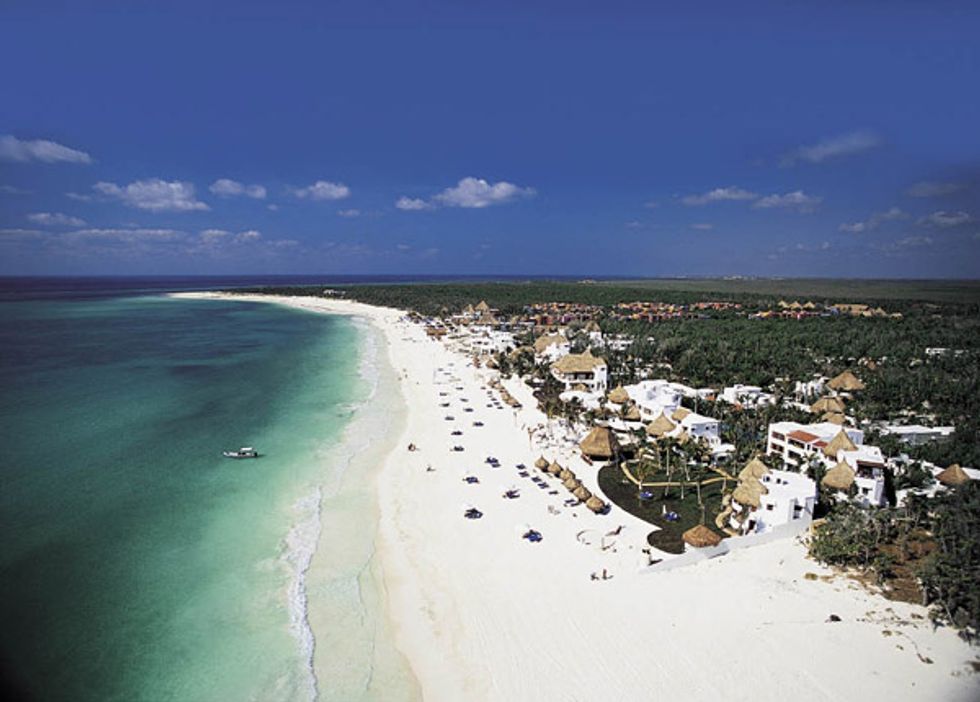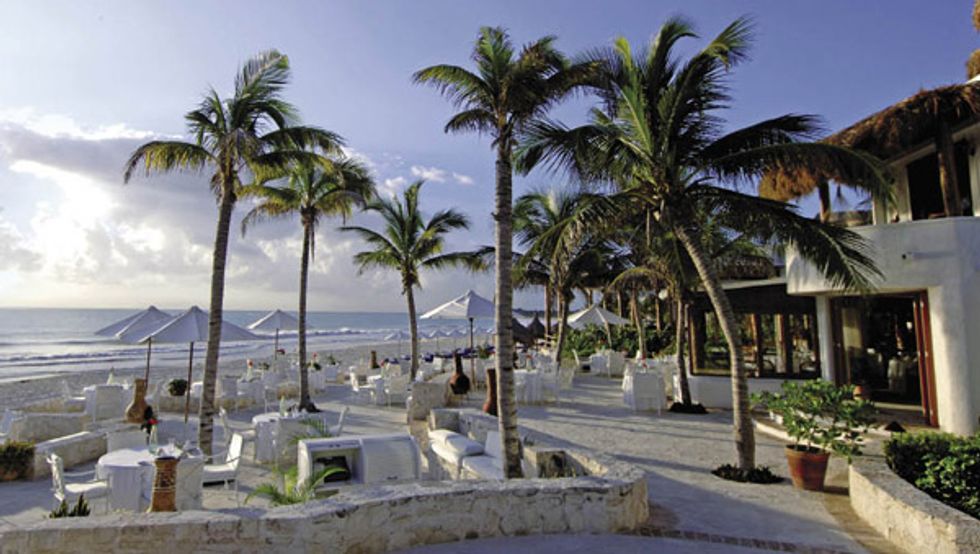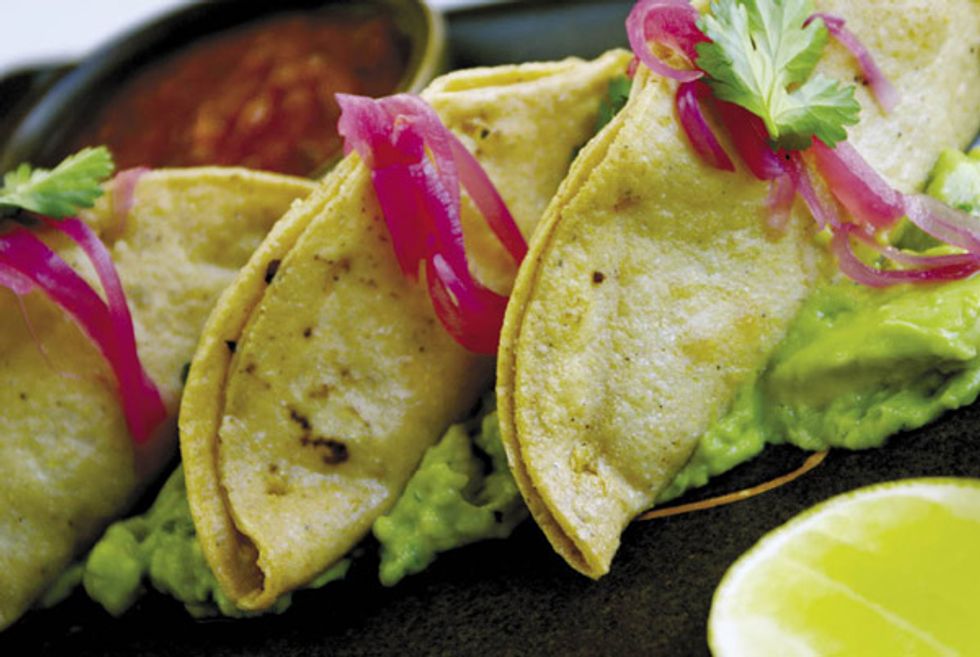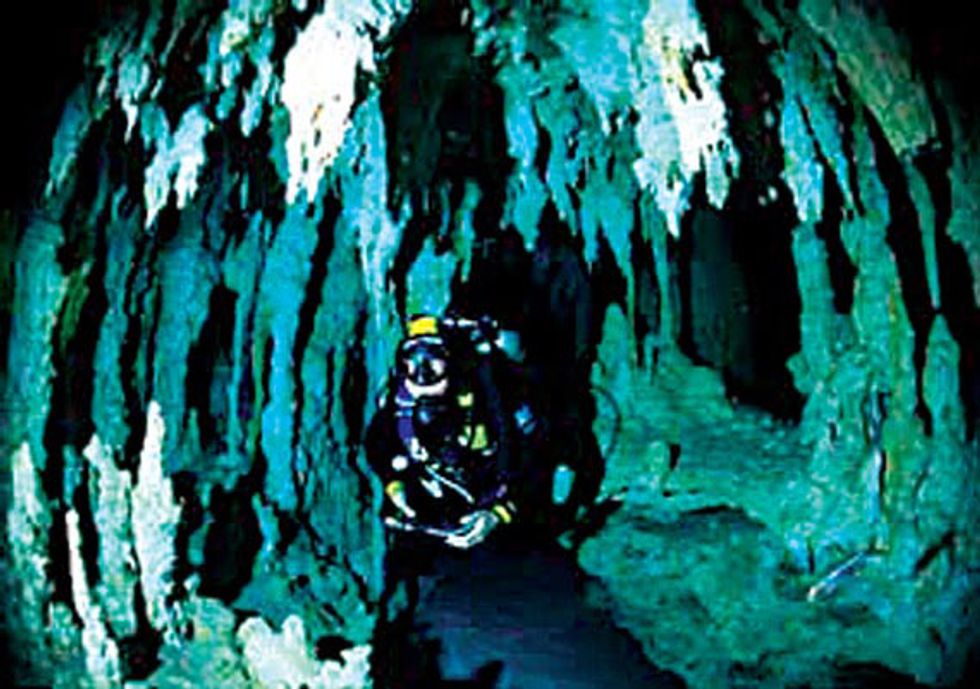Fortify yourself with Tulum’s authentic eats before exploring ancient ruins.
If you’re a lover of the town of Tulum and the surrounding Riviera Maya, you’re likely not a fan of a certain type of Mexico vacation—one that involves thumping nightclubs, body shots, and not a whiff of true Mexican culture for miles. If so, the minute you step foot in the Cancun airport—the main hub for Yucatan Peninsula vacationers—you’ll want to immediately rent a car and hightail it out of there.
Cancun’s megaresorts quickly fade into the distance as you drive the straight shot down Highway 307. Though a thicket of jungle obstructs the view, roll down the window and inhale the balmy air. It’s thrilling just to know that miles of beach lie to your left along with postcard-perfect white sand and warm, aqua-colored Caribbean water.
For many headed south, Tulum is a primary destination, attracting visitors who prefer to be a bit more off the grid—if not entirely. The laid-back town is also the site of a well-preserved, pre-Columbian city with ruins that sit majestically atop the ocean cliffs. Though restaurant prices can also be steep—expect to pay what you might in San Francisco—this area still attracts a walking-shoe group prone to sun salutations. The highway cuts right through the middle of Tulum, which for better or worse, keeps it from being overly quaint. This means that lodging in town is less expensive than it is at the palapa (thatched-roof) hotels that line a short stretch of coast outside Tulum. At the center of town, real people live and work among street stands selling freshly squeezed juice and panuchos—fried corn tortillas hollowed and stuffed with black beans and then topped with shredded turkey or chicken, pickled onions, and avocado. After a few of these with a cold cerveza, your shoulders should start to release themselves from your ears. Get your flip-flops out of your suitcase, and slip them on. Only now are you truly in Mexico.
STAY
Splurge with a room along the Riviera Maya. If you’re not paying attention, you’ll drive right by the subtle gates leading to Maroma Resort and Spa (km. 51 Carretera Cancún Tulum, 866-454-9351, maramohotel.com), an understated but tasteful property in the midst of more splashy resort entrances. Arrive at dusk just as the staff lights the pathways with hundreds of tea candles. There are pools, but the beach is complete with bed-like lounge chairs, umbrellas, and a staff to bring you a cocktail. At breakfast, watch tortillas being handmade by a true Mexican grandmother. Another lovely stay in Tulum can be had at Mezzanine (303-578-1301, mezzaninetulum.com), a chic and contemporary nine-room oceanfront hotel decorated with Buddhas. It’s at the end of the string of hotels, meaning an expanse of beach is yours for the taking. The hotel is also a quick walk to the Tulum ruins.
EAT
If you’re staying at Maroma, take a night and head to the resort’s El Restaurante. Chef Juan Pablo Loza has a smartly executed menu celebrating all of the regional cuisines of Mexico. Try the make-your-own guacamole, which includes pomegranate seeds and more. In Tulum, everyone goes to beachside Posada Margherita (posadamargherita.com), owned by a gregarious Italian, for a lively, if pricey, experience. But El Tabano (km. 6 Road to Boca Paila, 984-134-8725), located across from the beach, has an open kitchen and outdoor-only seating and might be even more fun. It’s quirky and a touch hippie—in a good way—with Mexican-inspired food including stuffed poblanos, fish tacos, coconut shrimp, and ceviche. If the electricity goes out while you’re eating, just go with it. Also, don’t knock Mezzanine’s restaurant, which serves very good Thai food by any standard—in fact, it’s better than most in San Francisco.
PLAY
For a mini adventure, head to the cenotes—underground freshwater caves in the region. To get to the nearest one, drive toward the town of Cobá, and look for the sign pointing you to Gran Cenote (grancenote.com), which is actually smaller than some and just 20 minutes away. Both snorkeling and diving are on offer, and swimming under a canopy of stalactites is magical. To pretend you’re an early explorer, arrive in the morning and avoid the crowds. For scuba diving, all you need is an open-water certificate.
























